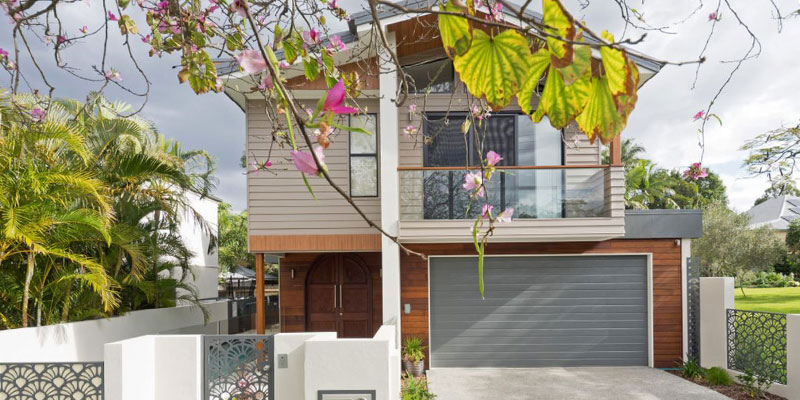Dress your home in a full (or partial) metal jacket to protect it from the elements and give it architectural flare
Cladding is a non-load-bearing layer attached to the outside of a home that can protect the building from the effects of weather, and provide an element of aesthetic appeal.
Metal cladding comes in a range of options, such as zinc, aluminium, copper and steel, that each have their own individual look and character, while various cladding systems include horizontal or vertical boards and overlapping panels and tiles.
Metal cladding is typically durable and a sustainable alternative to some alternative materials.
Here are five metal cladding materials that will add hard wearing cladding to your home.
1. Aluminium
Aluminium is a lightweight yet strong material for cladding a house. As a soft metal, it has high formability, but thickness is important for greater durability and a longer lifespan.
Aluminium is among the most waterproof of cladding materials and protects against moisture problems, which makes it a good choice for coastal homes.
Aluminium cladding requires minimal maintenance and can be repainted easily if required.
Aluminium is an abundant resource, however, it is non-renewable. On the sustainability upside though, it is reusable and recyclable and requires little energy to manufacture.
2. Zinc
Zinc is highly versatile and an increasingly common sight in contemporary architecture. It is a soft and malleable material, which allows for flexible construction.
Zinc is extremely durable and low maintenance, and its resistance to oxidisation – by forming a naturally protective layer, known as a patina – helps it achieve an average lifespan of approximately 60 to 80 years.
Zinc is also a sustainable choice, being a non-toxic, recycled and recyclable material. It also takes less energy to produce zinc than other principal metals.
3. Copper
Copper is a timeless material that develops a beautiful patina and character with age, making is suitable for both traditional and contemporary homes.
Copper’s warm bronze tones turn an iridescent brown through natural weathering, before developing a green patina.
Copper is lightweight and durable, which can be important on large buildings. It also has a very long lifecycle and needs no treatment or maintenance with wear and tear.
4. Corten steel
Corten is a weather-resistant steel (copper chromium alloy steel) that is more resistant to atmospheric weathering than other unalloyed steels.
Its chemical composition reacts to pollutants in the atmosphere and promotes the early formation of a protective oxide film that constantly regenerates over time. This patina develops as a reddish brown layer and gains a darker hue with time.
Despite the look of corrosion, Corten has twice the tensile strength of mild steel, making it an ideal structural material as well as being used for cladding and other architectural features.
Corten has the ability to blend with urban, rural and industrial settings and complements natural surroundings. Shades of red, brown and orange become more textured with rain and sun exposure, creating deeper or lighter tones to the rust effect it develops.
It’s important to note that Corten steel is not rustproof in itself and provisions should be made for drainage to reduce the possibility of rust stains on nearby surfaces.
5. Corrugated steel
Corrugated steel is a lightweight, strong and durable material that weathers well.
The wave-like pattern of corrugated steel has become a recognisable and timeless element in traditional and contemporary Australian architecture, having been used since the 1850s.
Corrugated cladding adds depth and texture to a facade and is available in a variety of colours. It is also easy to maintain and long lasting.
Cut through all the noise and information overload about getting your new home… talk direct to the team at Building Buddy 1800 710 102
Read the full source article here
